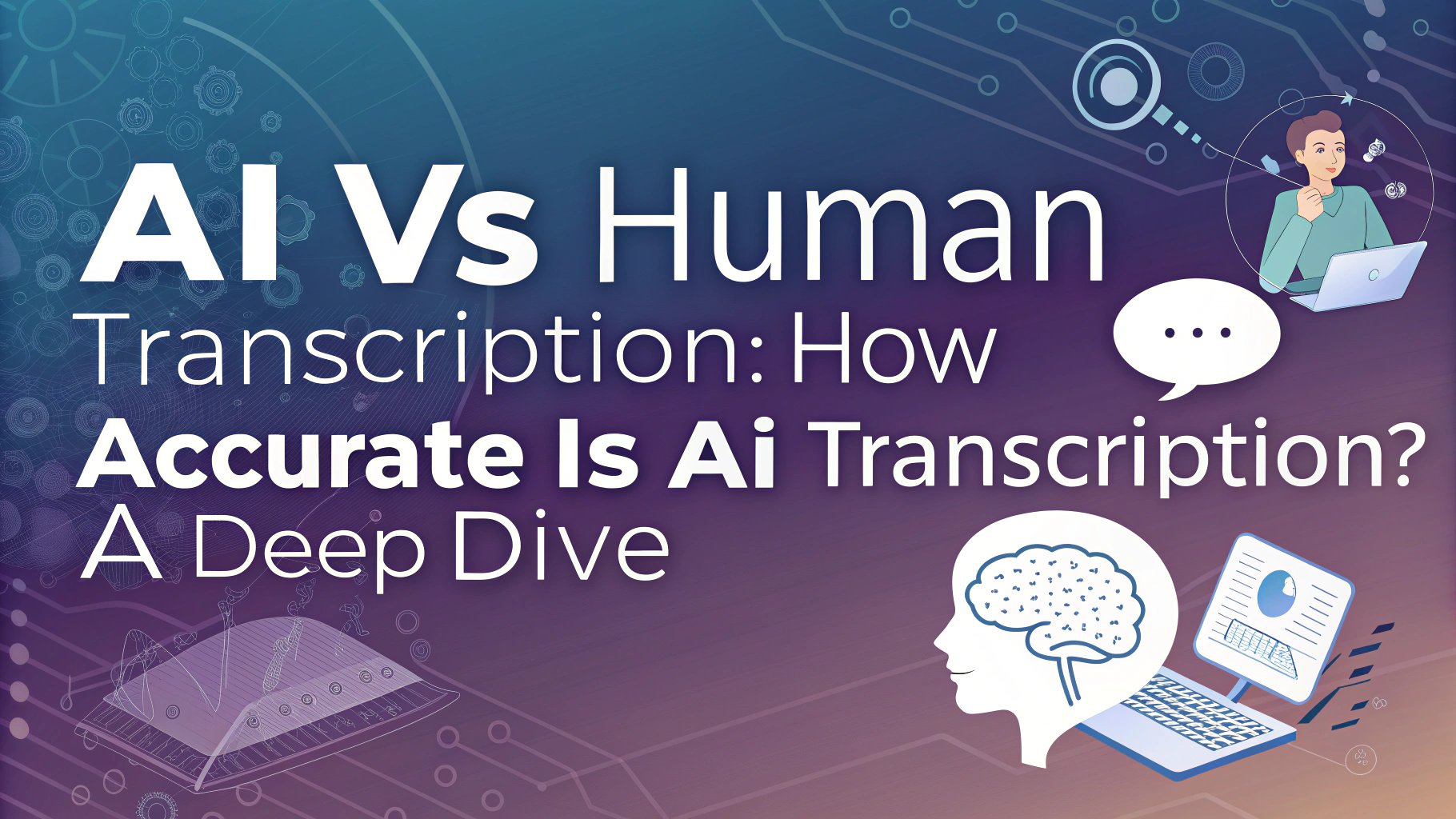AI vs Human Transcription:Cost vs Accuracy
AI-powered transcription tools—backed by advances in neural networks and speech recognition—have made headlines for offering fast and affordable text conversions of spoken audio. But how do they perform against human transcriptionists, especially in high-stakes situations like legal, medical, or research contexts?
Reported Accuracy Rates: AI vs. Human
According to Ditto Transcripts’ independent study, AI la précision de la transcription hovered at just 61.92%, while human transcribers hit a consistent 99% précision rate
Other data from Ditto shows that even the best ASR-supported systems top out around 86%, significantly lower than human performance .
Bottom line: At best, AI can match ~85–86% accuracy; more commonly it hovers in the 60–70% range—far from human-level precision.
🔍 Why These Gaps Appear
Word Error Rate (WER)
Human transcribers often achieve WERs below 1%, while AI can produce 10–15% or higher errors per 1,000 words.
Context and Nuance
Humans grasp subtleties—speaker intent, accent, technical terms, homophones—better than AI, especially in lectures, interviews, and noisy environments.
Real‑world vs. Clean Audio
Laboratory-grade audio might yield ~15–25% WER in AI; once you introduce background noise or overlapping voices, errors spike. qualité audio determines a lot.
🧩 Implications by Industry
Legal/Medical Accuracy:
A 38% error rate (as seen in Ditto’s AI findings) is unacceptable in legal documents, medical records, or academic research—where every word can matter.
Academic Research and Lectures:
AI’s 86% ceiling may miss discipline-specific jargon or speaker nuances, making it unreliable for thorough qualitative analysis.
Accessibility Tools:
Despite rapid improvements, user communities—especially the deaf or hard-of-hearing—report persistent issues in caption quality from ASR tools.
✅ When AI Works—and When It Doesn’t
| ✅ Good for… | ❌ Poor for… |
|---|---|
| Quick rough drafts (e.g., podcasts, informal chats) | Legal depositions, medical/patient interviews, academic discourse |
| Clean, single-speaker audio | Noisy environments, overlapping speech, multiple accents |
| Easy licensing or metadata (e.g. interviews) | Technical jargon, contextual nuances, verbatim accuracy needs |
🛠️ Best Practices for Using AI Transcription
Use AI as a first draft
You’ll still need a human editor to review and correct—especially for specialized content.
Match the tech to the context
For clean, simple audio, AI alone may suffice. For critical or complex material, human expertise is essential.
Stay informed on accuracy stats
Always ask providers for WER data and test transcripts in your specific use cases.
🌐 Broader Research Insights
- Academic research confirms that even adapted ASR systems lag behind human performance: WERs of 15–24% vs. humans at ~8–9% on clean oral-history recordings.
- Independent audits reveal inconsistencies among vendors; reliability is uneven and declines sharply for live/streaming audio .
📝 Conclusion
AI transcription is undeniably fast and cost-effective, making it a solid choice for converting de l'audio au texte ou de la vidéo au texte in everyday use. Whether you’re transcribing mémos vocaux, generating YouTube transcripts, or capturing quick dictée, modern AI models can handle basic la synthèse vocale tasks with impressive speed. It’s also great for creating first-draft transcripts or automated Notes de la réunion sur l'IA.
However, when it comes to accuracy—especially in high-stakes fields like legal, medical, or academic research—AI still falls short of the golden 99% benchmark. In such cases, pairing AI with human review or relying on professional transcriptionists is essential for precision. AI is evolving fast, but for now, humans still lead in delivering reliable, high-accuracy transcription.


